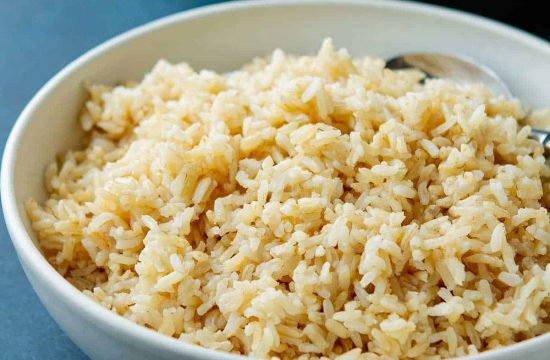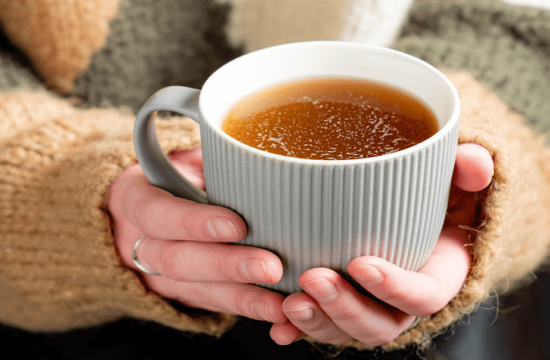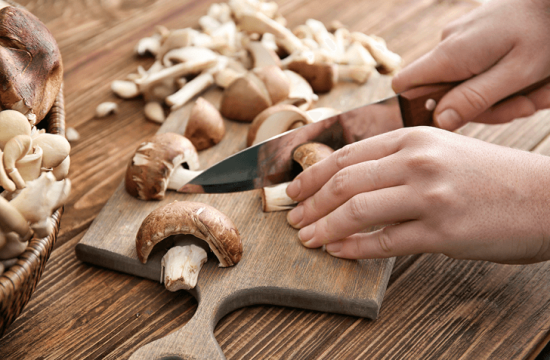This article explains Sushruta Samhita Sutrasthana Chapter 42 “Rasa Vishesha Vijnaniya Adhyaya” – Knowledge of properties of tastes.


Rasa Vishesha Vijnaniya Adhyaya- Knowledge of Properties of tastes
अथातो रसविशेषविज्ञानीयमध्यायं व्याख्यास्यामः ||१||
यथोवाच भगवान् धन्वन्तरिः ||२||
We will now expound the chapter by name Rasavishesha Vijnana – Knowledge of properties of tastes, as revealed by the venerable Dhanvantari.
Read – Lord Dhanwantari ‘The God of Ayurveda’
Rasotpatti – Genesis of tastes
आकाशपवनदहनतोयभूमिषु यथासङ्ख्यमेकोत्तरपरिवृद्धाः शब्दस्पर्शरूपरसगन्धाः, तस्मादाप्यो रसः |
परस्परसंसर्गात् परस्परानुग्रहात् परस्परानुप्रवेशाच्च सर्वेषु सर्वेषां सान्निध्यमस्ति, उत्कर्षापकर्षात्तु ग्रहणम् |
स खल्वाप्यो रसः शेषभूतसंसर्गाद्विदग्धः षोढा विभज्यते; तद्यथा- मधुरोऽम्लो लवणः कटुकस्तिक्तः कषाय इति |
ते च भूयः परस्परसंसर्गात्त्रिषष्टिधा भिद्यन्ते |
तत्र, भूम्यम्बुगुणबाहुल्यान्मधुरः, भूम्यग्निगुणबाहुल्यादम्लः, तोयाग्निगुणबाहुल्याल्लवणः, वाय्वग्निगुणबाहुल्यात् कटुकः, वाय्वाकाशगुणबाहुल्यात्तिक्तः, पृथिव्यनिलगुणबाहुल्यात् कषाय इति ||३||
Akasha, Pavana (vayu), Dahana (tejas),Toya (ap) and Bhumi (Prthvi) increased by one, in their succeeding order gives rise to shabda (sound), sparsha (touch), rupa (sight), rasa (taste) and gandha (smell) respectively. Hence taste is Apya (predominant in ap Bhutas – water element).
Because of their (of the Bhutas) mutual combination, mutual help and mutual admixture, there is presence of all Bhutas in all substances; and this is to be inferred by either more or less qualities of Bhutas (forming the substances).
Rasa (taste), though Apya (born from and predominant in qualities of Ap Bhuta) after combining with the remaining Bhutas, and undergoing ripening (process by heat), becomes divided into six kinds, such as Madhura (sweet), Amla (sour), Lavana (salt), Katuka (pungent), Tikta (bitter) and Kashaya (astringent). Even these become divided into sixty-three kinds by mutual combination.
Read – Six Tastes Of Ayurveda: Qualities, Benefits, Therapeutic Action (Shad Rasa)
Manifestation of various rasas i.e., tastes from combination and predominance of bhutas
Madhura Rasa (sweet taste) – is born with the predominance of Bhu (prithvi) and Ambu (ap) Bhutas.
Amla Rasa (sour taste) – is born with predominance of Bhu (Prthvi) and Agni (Tejas) Bhutas.
Lavana Rasa (salt taste) – is born with predominance of toya (ap) and agni (tejas) Bhutas.
Katu Rasa (pungent taste) – is born with the predominance of vayu and agni (tejas) Bhutas.
Tikta Rasa (bitter taste) – is born with the predominance of vayu and akasha Bhutas.
Kashaya Rasa (astringent taste) – is born with the predominance of Prthvi and Anila (vayu) Bhutas.
Read – Panchamahabhuta: Application, Areas of Utility in Ayurveda treatment
Rasa – Dosha Sambandha
Relation of tastes and Doshas
तत्र, मधुराम्ललवणा वातघ्नाः, मधुरतिक्तकषायाः पित्तघ्नाः, कटुतिक्तकषायाः श्लेष्मघ्नाः ||४||
तत्र वायोरात्मैवात्मा, पित्तमाग्नेयं, श्लेष्मा सौम्य इति ||५||
त एते रसाः स्वयोनिवर्धना, अन्ययोनिप्रशमनाश्च ||६||
Madhura (sweet), Amla (sour) and Lavana (salty) tastes mitigate vata.
Madhura (sweet), Tikta (bitter) and Kashaya (astringent) tastes mitigate Pitta.
Katu (pungent), Tikta (bitter) and Kashaya (astringent) tastes mitigate Kapha.
Vata is produced (born from) by Vayu bhuta itself. Pitta is born from agni (tejas bhuta) only. Shleshma (kapha) is born from Saumya (ap Bhuta).
These tastes cause an increase of substances (in the body) produced by their own Bhutas and a decrease of substances produced by different bhutas.
Read – Rasa Panchaka – 5 Qualities Of Substance (Dravya)
Saumya and Agneya types of tastes
केचिदाहुः- अग्नीषोमीयत्वाज्जगतो रसा द्विविधाः- सौम्या आग्नेयाश्च |
मधुरतिक्तकषायाः सौम्याः; कट्वम्ललवणा आग्नेयाः |
तत्र मधुराम्ललवणाः स्निग्धा गुरवश्च, कटुतिक्तकषाया रूक्षा लघवश्च; सौम्याः शीताः, आग्नेया उष्णाः ||७||
Some authorities say – since the world is predominant with properties of fire and water, even the tastes are of two kinds – Saumya (water / cool) and Agneya (fire / hot). Madhura, Tikta and Kashaya are Saumya; wheres Katu, Amla and lavana are Agneya. Madhura, Amla and Lavana are snigdha (unctuous) and Guru (heavy), whereas the Katu, tikta and kashaya are Ruksha (dry) and laghu (light, easy for digestion). Saumya are sheeta (cold) and Agneya are Ushna (hot).
Vata and Kashaya Rasa
तत्र शैत्यरौक्ष्यलाघववैशद्यवैष्टम्भ्य गुणलक्षणो वायुः, तस्य समानयोनिः कषायो रसः; सोऽस्य शैत्याच्छैत्यं वर्धयति, रौक्ष्याद्रौक्ष्यं, लाघवाल्लाघवं , वैशद्याद्वैशद्यं, वैष्टम्भ्याद्वैष्ट मिति; ॥८(१)॥
Coldness, dryness, lightness, non-sliminess, withholding (stopping) obstructing – are the properties of Vata. Kashaya rasa (astringent taste) is identical to Vata by birth (origin), so by its (of astringent taste) coldness it causes increase of cold in the body, by its dryness it increases dryness, by its lightness it increases levity, by its viscidity it increases viscidity and by property of withholding it increases stopping (movements).
Read – Astringent Taste – Qualities, Health Benefits, Side Effects
Pitta and Katu Rasa
औष्णयतैक्ष्ण्यरौक्ष्मलाघववै शद्यगुणलक्षणं पित्तं , तस्य समानयोनिः, कटुको रसः; सोऽस्य औष्ण्यादौष्णयं वर्धयति, तैक्ष्णयात्तैक्ष्ण्यं , रौक्ष्याद्रौक्ष्यं, लाघवाल्लाघवं, वैशद्याद्वैशद्यमिति॥८(२)॥
Heat, sharpness / penetrating, dryness, lightness and non – sliminess are the properties of pitta. Katu rasa (pungent taste) is identical to it (pitta) by birth. So, by its (of pungent taste) heat, it causes increase of heat (in body), by its sharpness it increases sharpness (in the body), by its dryness it increases dryness, by lightness it increases lightness and by its non- sliminess it increases non- sliminess.
Read – Pungent Taste, Spices: Qualities, Health Benefits, Side Effects
Kapha and Madhura Rasa
माधुर्यस्नेहगौरवशौत्यपैच्छिल्यगुणलक्ष्णः श्लेष्मा; तस्य समानयोनिर्मधुरो रसः, सोऽस्य माधुर्यान्माधुर्यं वर्धयति, स्नेहात् स्नेहं, गौरवाद्रौरवं, शौत्याच्छैत्यं, पैच्छिल्यात् पैच्छिल्यमिति ॥८(३)॥
Sweetness, unctuousness, heaviness, coldness and sliminess are the properties of shleshma (kapha). Madhura rasa (sweet taste) is identical to it (kapha) by birth. So, by its (of sweet taste) sweetness it causes increase of sweetness in the body, by its unctuous property it increases unctuousness, by its heaviness it increases heaviness, by its coldness it increases coldness and by its sliminess it increases sliminess in the body.
Read – Benefits of Sweet Taste – Ayurveda Description, Effect On Body
तस्य पुनरन्योनिः कटुको रसः स श्लेष्पणः प्रत्यनिकत्वात् कटुकत्वान्माधुर्यमभिभवति, रौक्ष्यात् स्नेहं, रौक्ष्यात् स्नेहं, लाघवाद्रौरवम्, औष्ण्याच्चैत्यं, वैश्द्यात् पैच्छिल्यमिति ।तदेदन्निदर्शनमात्रमुक्तं भवति ॥८(४)॥
Katurasa (pungent taste) is different from it (Kapha) by birth, because of possessing opposite qualities, it (pungent taste) by its pungency masks (overpower) sweetness, by its dryness overpowers unctuousness, by its lightness overpowers heaviness, by its heat overpowers cold, by its viscidity it overpowers sliminess.
The above description is for the sake of illustration only.
Rasa Lakshana- Properties of tastes
रसलक्षणमत ऊर्ध्वं वक्ष्यामः- तत्र, यः परितोषमुत्पादयति प्रह्लादयति तर्पयति जीवयति मुखोपलेपं जनयति श्लेष्माणं चाभिवर्धयति स मधुरः;
यो दन्तहर्षमुत्पादयति मुखास्रावं जनयति श्रद्धां चोत्पादयति सोऽम्लः;
यो भक्तरुचिमुत्पादयति कफप्रसेकं जनयति मार्दवं चापादयति स लवणः; यो जिह्वाग्रं बाधते उद्वेगं जनयति शिरो गृह्णीते नासिकां स्रावयति स कटुकः; यो गले चोषमुत्पादयति मुखवैशद्यं जनयति भक्तरुचिं चापादयति हर्षं च स तिक्तः; यो वक्त्रं परिशोषयति जिह्वां स्तम्भयति कण्ठं बध्नाति हृदयं कर्षति पीडयति च स कषाय इति ||९||
Further, we will describe the properties of taste;-
Madhura Rasa – That which produces overall contentment, happiness, satisfaction, enlivening, causes coating in the mouth and increases Kapha is Madhura (sweet).
Amla Rasa – That which produces tingling of the teeth, increases salivations and creates desires (in food) is Amla (sour).
Lavana Rasa – That which bestows taste to the food, produces more flow of Kapha and creates softness in Lavana (salt).
Katu Rasa – That which hurts the tip of the tongue, causes emotions, seizes the head (causes headache), produces secretion in the nose is Katuka (pungent).
Tikta Rasa – That which produces burning sensation in the throat, cleanses of the mouth (removes coating of dirt), bestows desire in food and horripilations is Tikta (bitter).
Kashaya Rasa – That which creates dryness of the mouth, withholds the (movement of) the tongue, obstructs the throat, debilitates and hurts the heart is Kashaya (astringent).
Rasa Guna – Functions of the tastes
Madhura Rasa (sweet taste) –
रसगुणानत ऊर्ध्वं वक्ष्यामः- तत्र, मधुरो रसो रसरक्तमांसमेदोऽस्थिमज्जौजः शुक्रस्तन्यवर्धनश्चक्षुष्यः केश्यो वर्ण्यो बलकृत्सन्धानः
शोणितरसप्रसादनो बालवृद्धक्षतक्षीणहितः षट्पदपिपीलिकानामिष्टतमस्तृष्णामूर्च्छादाहप्रशमनः षडिन्द्रियप्रसादनः कृमिकफकरश्चेति; स एवंगुणोऽप्येकएवात्यर्थमासेव्यमानः कासश्वासालसकवमथुवदनमाधुर्यस्वरोपघातकृमिगलगण्डानापादयति तथाऽर्बुदश्लीपदबस्तिगुदोपलेपाभिष्यन्दप्रभृतीञ्जनयति॥१०(१)॥
Properties of sweet taste –
- increases / helps growth of Rasa (plasma) Rakta (blood), Mamsa (muscles), Medas (fat), Asthi (bone), Majja (bone marrow), Ojas (essence of dhatus), shukra Semen), and Stanya (breastmilk);
- is good for the eyes (vision), hairs, colour of the skin,
- bestows strength,
- unites things,
- purifies blood and plasma;
- best suited to children, old persons, the wounded, emaciated,
- very much liked by bees and ants;
- relieves thirst, fainting, burning sensation;
- satisfies all the six sense organs,
- produces worms(bacteria etc) and increases Kapha
Effects of consuming only sweet taste –
Though endowed with properties such as these, if used alone in more quality, it (sweet taste) gives rise to cough, dyspnoea, long static of food in the stomach, vomiting, sweet taste in the mouth, hindrance to voice speech, genesis of worms, goitre, malignant tumour, filariasis, collection of dirt inside the urinary bladder and rectum, ophthalmic conjunctivitis and such other diseases.
Amla Rasa (sour taste) –
अम्लो जरणः पाचनो दीपनः पवननिग्रहणोऽनुलोमनः कोष्ठविदाही बहिःशीतः क्लेदनः प्रायशोहृद्यश्चेति; स एवंगुणोऽप्येक एवात्यर्थमुपसेव्यमानो दन्तहर्षनयसंमीलनरोमसं वेजनकफविलयनशरीरशौथिल्यान्यापादयति, तथा क्षताभिहतदग्धदष्टभग्ररुग्णशूनप्रच्युतावमूत्रितविसर्पितच्छिन्नभिन्नविद्धोत्पिष्टादीनि पाचयत्याग्रेयस्वभावात् परिदहति कण्ठमुरो हृदयं चेति ॥१०(२)॥
Properties of sour taste –
- is digestive,
- kindles hunger and digestion,
- mitigates pavana (vata),
- helps elimination (of faces etc),
- causes burning sensation inside the alimentary tract;
- is cold to touch,
- creates moistness and
- generally good for the heart
Though possessing these qualities, if used alone in more quantity, it (sour taste) produces tingling of the teeth, closing of the eyes, horripilations, liquefaction of Kapha, and looseness of the body. It causes suppuration of wounds caused by blows, burns, snake bite etc, animal bites, fractures, swelling, dropping (dislocation), wounds caused by insects like spiders etc urinating on the body, touch of poisonous insects, wounds such as severed, punctured, torn, crushed etc. Due to fiery nature, it causes burning sensation in the throat, chest and chest (cardiac region).
Read – Sour Taste – Qualities, Health Benefits, Side Effects
Lavana Rasa (salt taste) –
लवणः संशोधनः पाचनो विश्लेषणः क्लेदनः शैथिल्यकृदुष्णः सर्वरसप्रत्यनीको मार्गविशोधनः सर्वशरीरावयवमार्दवकरश्चेति; स एवंगुणोऽप्येकएवात्यर्थमासेव्यमानो गात्रकण्डूकोठशोफवैवर्ण्यपुस्त्वोपघातेन्द्रियोपतापमुखाक्षिपाकरक्तपित्तवाशोणिताम्लीकाप्रभृतिनापादयति ॥१०(३)॥
Properties of salt taste –
- is purifier of the body,
- digestive,
- separates mixture of things,
- causes moistness and looseness,
- hot (produces heat),
- suppresses all other tastes,
- clears the passages (of Doshas, Dhatus, and Malas), and
- bestows softness to all the parts of the body
Though possessing these qualities, if used in more quantity it gives rise to itching, rashes on the skin, swelling, discoloration, impotence, debility of the sense organs, ulceration of the mouth and eyes, bleeding diseases, gout and sour belching etc.
Katu Rasa (pungent taste) –
कटुको दीपनः पाचनो रोचनः शोधनः स्थौल्यालस्यकफकृमिविषकुष्ठकण्डूप्रशमाः सन्धिबन्धविच्छेदनोऽवसादनः स्तन्यशुक्रमेदसामुहन्ता चेति: स एवंगुणोऽप्येक एवात्यर्थमुपसेव्यमानो भ्रममदगलताल्वोष्ठशोषदाहसंतापबलविघातकम्पतो दभेदकृत् करचरणपार्श्वपृष्ठप्रभृतिषु च वातशूलानापादयति ॥१०(४)॥
Properties of pungent taste – Katu Rasa (pungent taste) –
- it kindles hunger,
- is digestive,
- helps taste,
- purifies the body,
- mitigates corpulence (obesity), lassitude, excess of kapha, worms, poison, leprosy,(and some other skin diseases) and itching;
- releases stiffness of joints,
- causes depression of the mind and
- decreases breast milk, semen and fat
Though possessing these qualities, when used in more quantity it gives rise to giddiness, toxicity, dryness of the throat, palate and lips, burning sensation, heat exhaustion, loss of strength, trembling, pricking pain and pain of Vata origin in the arms, legs, flanks back etc.
Tikta Rasa (bitter taste) –
तिक्तश्छेदनो रोचनो दीपनः शोधनः कण्डूकोठतृष्णामूर्च्छाज्वरप्रशमनः स्तन्यशोधनो विण्मूत्रक्लेदमेदोवसापूयोपशोषणश्चेति; स एवंगुणोऽप्येक एवात्यर्थमुपसेव्यमानो गात्रमन्यास्तम्भाक्षेपकार्दितशिरः शूलभ्रमतोदभेदच्छेदास्यवैरस्यान्यापादयति ॥१०(५)॥
Properties of bitter taste –
- it removes adhering,
- helps taste,
- kindles hunger,
- purifies the body,
- relieves itching, rashes of the skin, thirst, fainting, and fever,
- purifies breast milk,
- dries up the faeces, urine, moistness (sweat and other fluids) fat, muscles fat, and pus
Though endowed with these qualities, if used alone in more quantity, it gives rise to stiffness of the whole body, wry neck, convulsions, facial paralysis, headache, giddiness, pains such as pricking, cutting, incising etc and bad taste in the mouth.
Kashaya Rasa (astringent taste) –
कषायः संग्राहको रोपणः स्तम्भनः शोधनो लेखनः शोषणः पीडनः क्लेदोपशोषणश्चेति; स एवंगुणोऽप्येक एवात्यर्थमुपसेव्यमानो हृत्पीडास्यशोषोदराध्मानवाक्यग्रहमन्यास्तम्भगात्रस्फुरणचुमुचुमायनाकुञ्चनाक्षेपणप्रभृतीञ्जनयति ॥१०॥
Properties of astringent taste – Kashaya Rasa (astringent taste) –
- withholds elimination,
- heals wounds,
- causes stiffness,
- purifies the body,
- scarifies,
- causes dryness, squeezing and
- dries up moisture
Even with all these qualities, if used alone in great quantities it gives rise to pain in the heart, dryness of the mouth, distension of the abdomen, hindrance to speaking; wryneck, throbbing in the body parts, tingling, constrictions, convulsions etc.
Read – Bitter Taste – Qualities, Health Benefits, Side Effects
Madhuradi Vargas
अतः सर्वेषामेव द्रव्याण्युपदेक्ष्यामः |
तद्यथा- काकोल्यादिः क्षीरघृतवसामज्जशालिषष्टिकयवगोधूममाषशृङ्गाटककसेरुकत्रपुसैर्वारुकर्कारुकालाबूकालिन्दकतक- गिलोड्यप्रियालपुष्करबीजकाश्मर्यमधूकद्राक्षाखर्जूरराजादनतालनालिकेरेक्षुविकारबलातिबलात्मगुप्ता- विदारीपयस्यागोक्षुरकक्षीरमोरटमधूलिकाकूष्माण्डप्रभृतीनि समासेन मधुरो वर्गः; दाडिमामलकमातुलुङ्गाम्रातककपित्थकरमर्दबदरकोलप्राचीनामलकतिन्तिडीककोशाम्रकभव्यपारावत- वेत्रफललकुचाम्लवेतसदन्तशठदधितक्रसुराशुक्तसौवीरकतुषोदकधान्याम्लप्रभृतीनि समासेनाम्लो वर्गः; सैन्धवसौवर्चलविडपाक्यरोमकसामुद्रकपक्त्रिमयवक्षारोषरप्रसूतसुवर्चिकाप्रभृतीनि समासेन लवणो वर्गः; पिप्पल्यादिः सुरसादिः शिग्रुमधुशिग्रुमूलकलशुनसुमुखशीतशिवकुष्ठदेवदारुहरेणुकावाल्गुजफल- चण्डागुग्गुलुमुस्तलाङ्गलकीशुकनासापीलुप्रभृतीनि सालसारादिश्च प्रायशः कटुको वर्गः; आरग्वधादिर्गुडूच्यादिर्मण्डूकपर्णीवेत्रकरीरहरिद्राद्वयेन्द्रयववरुणस्वादुकण्टकसप्तपर्णबृहतीद्वयशङ्खिनीद्रवन्ती- त्रिवृत्कृतवेधनकर्कोटककारवेल्लवार्ताककरीरकरवीरसुमनःशङ्खपुष्प्यपामार्गत्रायमाणाशोकरोहिणीवैजयन्ती- सुवर्चलापुनर्नवावृश्चिकालीज्योतिष्मतीप्रभृतीनि समासेन तिक्तो वर्गः; न्यग्रोधादिरम्बष्ठादिः प्रियङ्ग्वादी रोध्रादिस्त्रिफलाशल्लकीजम्ब्वाम्रबकुलतिन्दुकफलानि कतकशाकफलपाषाणभेदकवनस्पतिफलानि सालसारादिश्च प्रायशः कुरुवककोविदारकजीवन्तीचिल्लीपालङ्क्यासुनिषण्णकप्रभृतीनि वरकादयो मुद्गादयश्च समासेन कषायो वर्गः ||११||
Next, we will enumerate the substance belonging to those tastes as follows:-
1. Madhura Varga – Sweet group
Drugs of Kakolyadi gana, Milk, Ghee, Vasa (muscle fat), majja (bone marrow), Sali, Swastika, Barley, Wheat, Black gram, Shringataka, Kaseruka, Trapusa, Ervarpka, Karkaruka, Alabu, Kalinda, Kataka, Giloda, Priyala, Puskarabija, Kasmarya, Madhuka, Darksa, Dates, Rajadana, Tala, Nalikera, Iksuvikara (products of sugarcane juice), bala, atibala, Atmagupta, Vidari, Payasya, Goksuraka, Ksiramorata, Madhulika, Kushmanda and such others – these in brief, form Madhura Varga – group of substances of sweet taste.
2. Amla varga – sour group
Dadima, Amalaka, Matulunga, Amrataka, Kapittha, Karamarda, badara, Kola, Pracinamalaka, Tintidika, Kosamraka, bhavya, paravata, Vetraphala, lakuca, Amlavestasa, Dantasatha, Curd, Buttermilk, sura, sukta, sauviraka, Tusodaka, Dhanyamla (these are fermented beverages) – these, in brief, form AmlaVarga – group of substances of sour taste.
3. Lavana varga – salt group
Saindhava, Sauvarcala, Bida, Pakya (udbhida lavana), Romakka, Samudra, Prakrima (salt obtained by boiling salt water), Yavaka (ash of barley), Usara prasuta (Usara lavana), Suvarcika etc – these in brief form Lavana Varga – group of substances of salt taste.
4. Katuka varga – Pungent group
Drugs of Pippalyadi Gana, Surasadi Gana, Sigru, Madhusigru, Mulaka, Garlic, Sumukha,Sitasiva, Kustha, Devadaru, Harenuka, Avalguja Phala, canda, guggulu, Musta, Langalaki, Sukanasa, Pila etc, drugs of Salasaradi gana- these generally form Katu varga – group of substances of Pungent taste.
5. Tikta Varga – Bitter group
Drugs of aragwadhadi gana, guducyadi gana, Mandukaprani, vetrakarira the two haridra, Indrayava, Varuna, Swadukantaka, saptaparna, the two Brhati, Sankhini, Dravanti, Trivrt, Krtavedhana, Karkotaka, Karvella, Vartaka, Karira, Karavira, Sumana, Sankhapuspi, apamarga, Trayamana, Asokarohini, Vaijayanti, Suvarcala, Punarnava, Vrscikali, jyothirmayi etc, in brief, form Tikta Varga – group of substances of bitter taste.
6. Kashaya varga – astringent group
Drugs of Nyagrodhadi, Ambasthadi, and Priyangvadi, Rodhradi ganas, Triphala, shallaki, Jambu, Amra, Bakula, fruits of Tinduka, Kataka and shaka Phala, Pashanabheda, Vanaspatiphala (fruits of trees like Nyagrodha etc) groups of Salasaradi gana generally. Kurabaka, Kovidaraka, Jivanti, chilli, Palankya, sunishannaka etc, varaka etc (ku dhanya varga) and Mudagadi etc (vidala varga) in brief, from Kashaya varga – group of astringent taste.
Rasa samyoga Sankhya
Number of combinations of tastes
The combination of these six tastes become sixty-three in number as follows, fifteen by the combination of two tastes, twenty by the combination of three tastes, fifteen by the combination of four tastes, six by the combination of five tastes, six by each taste separately, and one by the combination of all six tastes; the utility of these will be described elsewhere.
भवति चात्र-
जग्धाः षडधिगच्छन्ति बलिनो वश्यतां रसाः |
यथा प्रकुपिता दोषा वशं यान्ति बलीयसः ||१३||
(Substances of) these six tastes, when consumed by strong persons will become subjected (do not cause harm to such persons), just like the aggravated doshas become subjugated in strong persons.
इति श्रीसुश्रुतसंहितायां सूत्रस्थाने रसविशेषविज्ञानीयो नाम द्विचत्वारिंशत्तमोऽध्यायः ॥४२॥
Thus ends the forty-second chapter by name Rasavishesha Vijaniya in sutra sthana of Sushruta Samhita.












